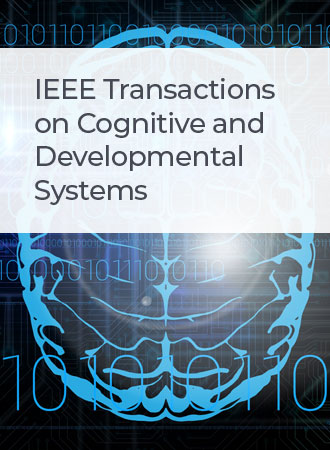Edge-Centric Functional-Connectivity-Based Cofluctuation-Guided Subcortical Connectivity Network Construction
IF 4.9
3区 计算机科学
Q1 COMPUTER SCIENCE, ARTIFICIAL INTELLIGENCE
IEEE Transactions on Cognitive and Developmental Systems
Pub Date : 2024-09-17
DOI:10.1109/TCDS.2024.3462709
引用次数: 0
Abstract
Subcortical regions can be functionally organized into connectivity networks and are extensively communicated with the cortex via reciprocal connections. However, most current research on subcortical networks ignores these interconnections, and networks of the whole brain are of high dimensionality and computational complexity. In this article, we propose a novel cofluctuation-guided subcortical connectivity network construction model based on edge-centric functional connectivity (FC). It is capable of extracting the cofluctuations between the cortex and subcortex and constructing dynamic subcortical networks based on these interconnections. Blind source separation approaches with domain knowledge are designed for dimensionality reduction and feature extraction. Great reproducibility and reliability were achieved when applying our model to two sessions of functional magnetic resonance imaging (fMRI) data. Cortical areas having synchronous communications with the cortex were detected, which was unable to be revealed by traditional node-centric FC. Significant alterations in connectivity patterns were observed when dealing with fMRI of subjects with and without Parkinson's disease, which were further correlated to clinical scores. These validations demonstrated that our model provided a promising strategy for brain network construction, exhibiting great potential in clinical practice.以边缘为中心、基于共波动引导的皮层下功能连接网络构建
皮层下区域可以在功能上组织成连接网络,并通过相互连接与皮层广泛沟通。然而,目前大多数关于皮层下网络的研究忽略了这些相互联系,而且整个大脑的网络具有高维性和计算复杂性。在本文中,我们提出了一种基于边缘中心功能连接(FC)的共同波动引导下皮层下连接网络构建模型。它能够提取皮层和下皮层之间的共同波动,并基于这些相互联系构建动态的皮层下网络。设计了基于领域知识的盲源分离方法,用于降维和特征提取。将我们的模型应用于两次功能磁共振成像(fMRI)数据时,获得了很高的再现性和可靠性。检测到与皮层有同步通信的皮质区域,这是传统的以节点为中心的FC无法显示的。在处理帕金森病患者和非帕金森病患者的fMRI时,观察到连接模式的显著改变,这与临床评分进一步相关。这些验证表明,我们的模型为脑网络构建提供了一种很有前景的策略,在临床实践中具有很大的潜力。
本文章由计算机程序翻译,如有差异,请以英文原文为准。
求助全文
约1分钟内获得全文
求助全文
来源期刊

IEEE Transactions on Cognitive and Developmental Systems
Computer Science-Software
CiteScore
7.20
自引率
10.00%
发文量
170
期刊介绍:
The IEEE Transactions on Cognitive and Developmental Systems (TCDS) focuses on advances in the study of development and cognition in natural (humans, animals) and artificial (robots, agents) systems. It welcomes contributions from multiple related disciplines including cognitive systems, cognitive robotics, developmental and epigenetic robotics, autonomous and evolutionary robotics, social structures, multi-agent and artificial life systems, computational neuroscience, and developmental psychology. Articles on theoretical, computational, application-oriented, and experimental studies as well as reviews in these areas are considered.
 求助内容:
求助内容: 应助结果提醒方式:
应助结果提醒方式:


